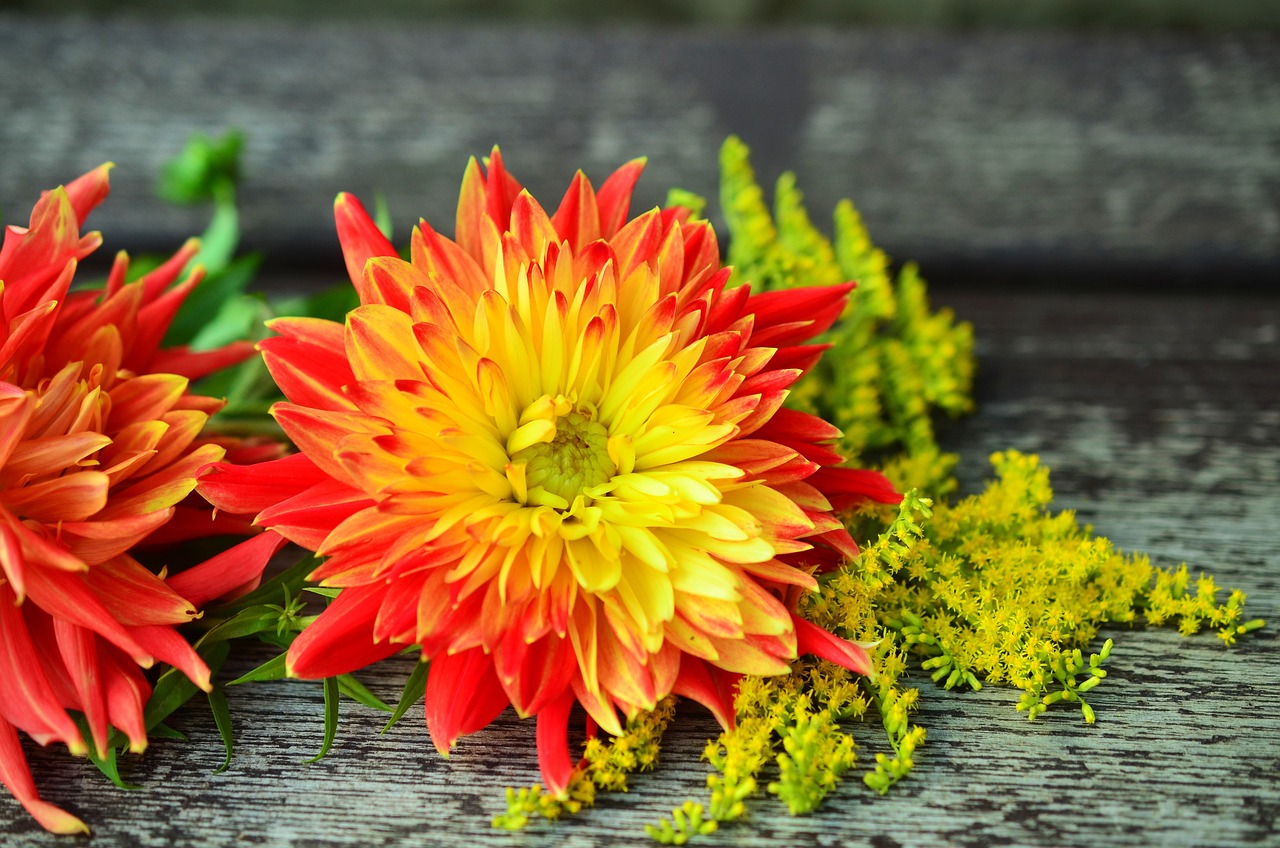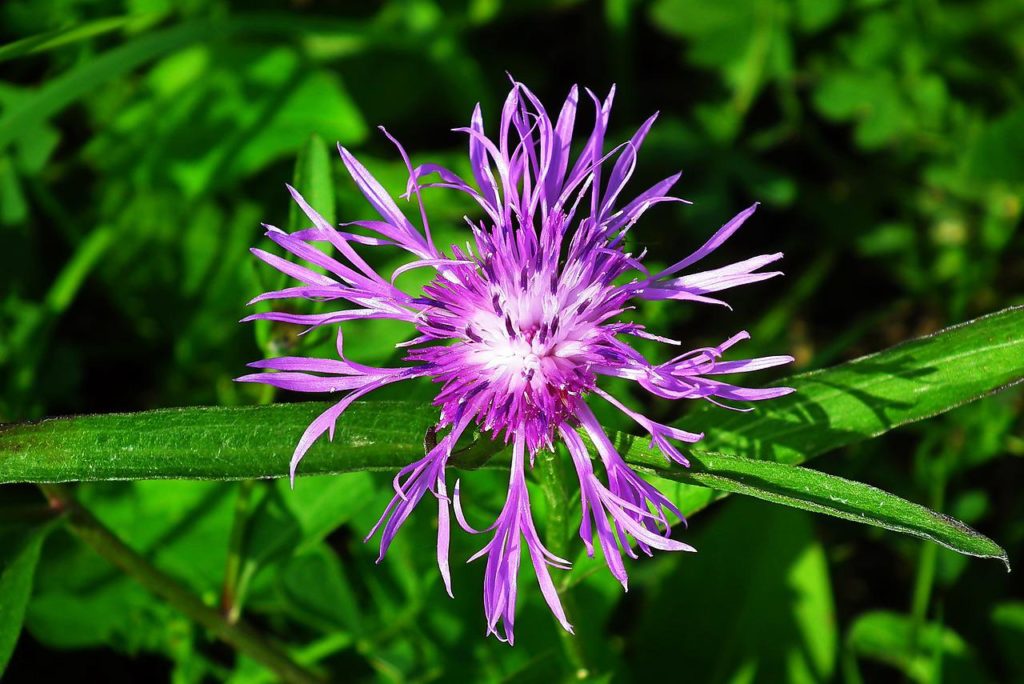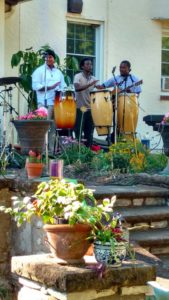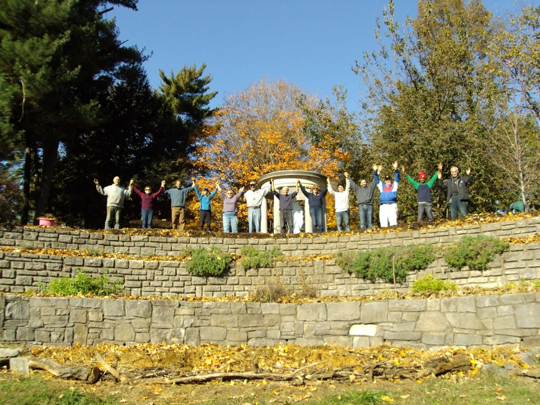News Archives » pollinator garden
October – Giving One’s Gold Away October 16th, 2023

(Image by congerdesign from Pixabay)
(by Sr. Maxine Pohlman, SSND, Director, La Vista Ecological Learning Center)
During fall the pollinator garden at La Vista brings to mind Mary Oliver’s delightful poem “Goldenrod”. She describes these ubiquitous fall flowers as having “light-filled bodies… giving their gold away”. I appreciate that way of looking at goldenrod which seem to be everywhere at this time of year.
Her poem came to mean more to me after hearing a talk on the physics of light by astronomer Stephan Martin. He told his listeners that light is how we know the Universe! Just that thought gives me pause. He invited us to recall the many ways we encounter light daily; for example, in the morning when we open our eyes and see light from the window which travels to our brains creating an image. He said that our eyes are the interface between ourselves and our world, and that seeing is a sacred connecting act we experience first thing upon awakening!
Next, we may take a morning walk and observe goldenrod growing and giving on the roadside. He explained that we are actually experiencing light from the sun absorbed by atoms of the flower. Goldenrod then emits the energy from these atoms, so we are seeing the light of goldenrod – not just a reflection, but the essence of goldenrod. How wonderful is that! Here is another reason to be in awe, and he said this is true for all that we see – each being is radiating itself into the world like a star, creating intimacy, healing our separation from nature – when we are receptive to this truth.
Later in the day we might be sitting near someone and feel heat radiating from them. The reality is that we are feeling light. They are glowing; we are glowing. Our bodies both see and feel light. Ponder this, our entire lives are powered by sunlight, and our energy IS the sun’s energy. Light is what we are!
No wonder Jesus was moved to say, “You are the light of the world… let your light shine…” No wonder Buddha said at the end of his life, “Make of yourself a light”. No wonder Mary Oliver implicitly encourages us to imitate goldenrod and give our gold away.
How can we not?
Breathing Life into Pollinator Garden @ La Vista July 25th, 2022
Master Gardener and Master Naturalist Susan Murray plus nine volunteers are in the process of renewing the La Vista Ecological Center Pollinator Garden begun in 2014. The monarda, a native plant that provides nectar for many bees, butterflies, birds, wasps, and other pollinators, is in full bloom. Our plan is to introduce more diversity so that, when the monarda has peaked, other natives will continue serving pollinators throughout the season as well as adding color and interest. This will happen over a period of years.

(Photo courtesy of MrGajowy3, Pixabay)
When some of the plants complete their blooming cycle, they die, making the garden less than attractive. However, we leave those plants because their seeds continue to serve other pollinators. In the winter they provide valuable habitat for species that overwinter here. Rather than clean them up so the garden has a tidy appearance, it is important to continue to provide for native animals.
This garden was created in response to the disappearing monarch butterfly. It, along with many other pollinators, are endangered by use of pesticides and reduction in habitat. It is also a way to give flesh to the Missionary Oblates Land Ethic statement and the Pope’s encyclical Laudato Si.
Our brochure explains the pollinator garden and includes quotes from both documents. The garden is also an educational tool, modeling a way to create this kind of garden and encouraging others to replicate it in the back yards, on a smaller scale.
Download this brochure to learn more about Lavista’s Pollinator Garden.
U.S Oblate Novices Support Garden Fundraiser & Concert at La Vista July 18th, 2017
 |
 |
 |
|
Pictures from the 2017 Pollinator Garden Fundraiser/Concert, Godfrey, IL |
La Vista is a part of Oblate Ecological Initiative, a ministry of the US Oblates Province efforts on priority for the Integrity of Creation.
The pollinator garden is one of three restoration projects of La Vista. It aims to offset threats to the monarch butterfly migration, assure a diverse food source throughout the season, and provide herbicide-free nectar for a variety of pollinators.
The pollinator garden was created in 2014 in response to threats to the monarch butterfly migration and bee colony collapse. Volunteers weeded and seeded a 6,000 square foot area. An Eagle Scout troop made four benches for the garden. The garden continues to be developed each year.
Since pollinators are responsible for every third bite of food we eat, and because their disappearance creates a hole in the ecosystem, we consider this effort important in contributing to the integrity of creation.
Monarch butterflies are migrants traveling from the North to Mexico and back yearly.
Read more about the work of the Oblate Ecological Initiative at http://www.lavistaelc.org/
Pollinator Garden Planted at the Oblate Ecological Initiative November 2nd, 2014
The Oblate Ecological Initiative recently held a Permaculture/Hugelkultur workshop to prepare for installation of a pollinator terrace garden. The pollinator garden was then installed using the concept of Hugelcultur. The Oblate novices helped in the digging and planting.
HUGELKULTUR: What is it?
Hugelkultur is a German word meaning “mound culture”. Hügelkultur replicates the natural process of decomposition that occurs on forest floors. Trees that fall in a forest often become like sponges, decaying and providing nutrients and water to seedlings. The water is slowly released back into the environment, benefiting nearby plants.
The process includes digging a trench, placing rotting logs and branches in it, and then topping it with organic matter found in your area, like branches, twigs, logs, decaying leaves, pine needles, straw, your own compost, and finally soil.
BENEFITS
There are many benefits to hugelkultur, making it a sustainable process. Since the mound provides water for the plants there is often no need to do any watering. The mound lasts for many years, and as the wood decomposes, it turns in humus and actually retains more water. These beds can also extend the growing season by a month or so, because the decomposition creates heat that keeps the bed warmer during colder months. Another benefit it that no materials need to be purchased, since the mounds can be created from natural materials found in your area. It is a useful way to dispose of unwanted woody organic matter. You can save energy that would be used in disposing of it.
Hugelkultur is an important part of sustainable, fertilizer-free agriculture.
Please see here for a full report on the workshop and planting.





